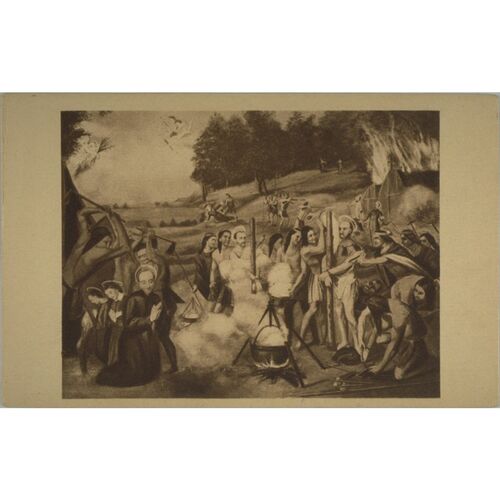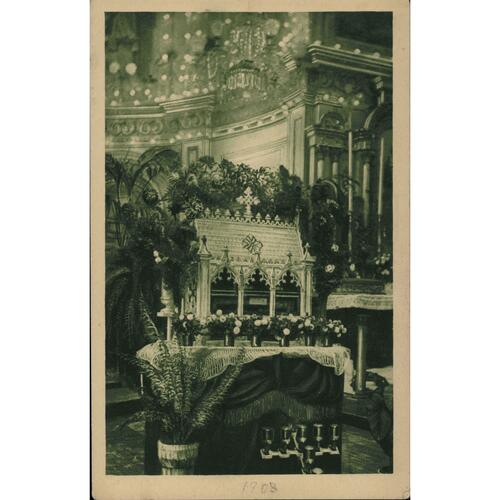GARNIER, CHARLES (called Ouracha by the Indians), priest, Jesuit, missionary, martyr; b. 1606 (or 1605) in Paris; d. 1649 in the Huron country.
He was baptized on 25 (or 26) May in the parish of Saint-Gervais, and was the second son of Jean Garnier, an under-secretary in Henri III’s private household and later maître des comptes in Normandy, and of Anne de Garault, who came from a noble family of Orléans. After attending the Collège de Clermont in Paris, which was under the direction of the Jesuits, he entered the noviciate of the Society of Jesus in 1624. He was ordained priest in 1635, was nominated for the missions in New France, and landed at Quebec on 11 June 1636, at the same time as Governor Huault de Montmagny. In July, together with Father Pierre Chastellain, he reached the territory of the Hurons. In 1639 and 1640 he wintered in the land of the Tobacco nation, which he vainly tried to convert. From 1641 to 1646 Garnier was employed at the Saint-Joseph (Teanaostaiaë) mission, among the Cord clan. Finally, in the autumn of 1646, he was again sent to the Tobacco nation, on the shores of Georgian Bay, and there he established a mission that this time flourished; he also met his death there, being slaughtered by the Iroquois on 7 Dec. 1649 when they attacked the village of Saint-Jean, at the time of the destruction of the Huron missions. His body, lacerated by two bullet wounds and two blows from a hatchet, was found a few steps from the ruins of his chapel. He was canonized by Pope Pius XI on 29 June 1930.
“De la prise et désolation de la mission de Saint-Jean, par les Iroquois, et de la mort du P. Charles Garnier, qui y était en mission” and “Abrégé de la vie du Père Charles Garnier,” in ACSM, “Mémoires touchant la mort et les vertus des pères Isaac Jogues . . .” (Ragueneau), repr. APQ Rapport, 1924–25, 76–85. APQ Rapport, 1929–30, 1–43, “Lettres de Saint Charles Garnier.” JR (Thwaites), XXXV, 118–44; et passim. Positio causae. Florian Larivière, La vie ardente de Saint Charles Garnier (Montréal, 1957). Rochemonteix, Les Jésuites et la Nouvelle-France au XVIIe siècle, I, 97–100, 409–18.
Cite This Article
Florian Larivière, “GARNIER, CHARLES (Ouracha),” in Dictionary of Canadian Biography, vol. 1, University of Toronto/Université Laval, 2003–, accessed December 28, 2025, https://www.biographi.ca/en/bio/garnier_charles_1E.html.
The citation above shows the format for footnotes and endnotes according to the Chicago manual of style (16th edition). Information to be used in other citation formats:
| Permalink: | https://www.biographi.ca/en/bio/garnier_charles_1E.html |
| Author of Article: | Florian Larivière |
| Title of Article: | GARNIER, CHARLES (Ouracha) |
| Publication Name: | Dictionary of Canadian Biography, vol. 1 |
| Publisher: | University of Toronto/Université Laval |
| Year of publication: | 1966 |
| Year of revision: | 2016 |
| Access Date: | December 28, 2025 |






